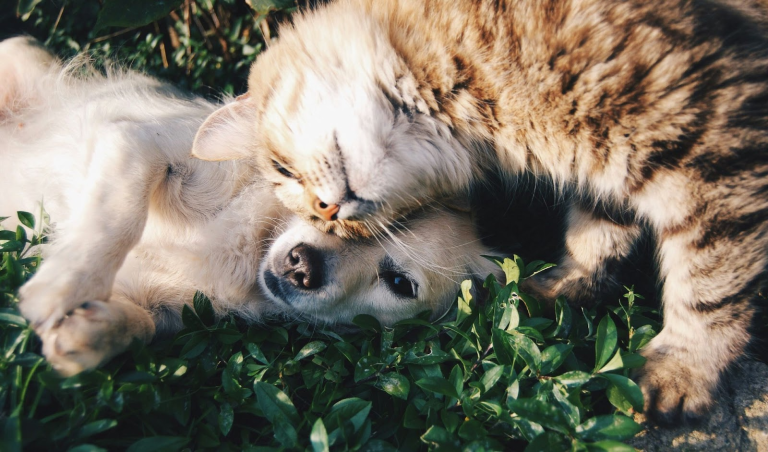
We’ve all been there. You’re sitting on the cold, sterile chair in the vet’s examination room, the scent of antiseptic in the air. Your best friend, the one with the wagging tail or the rumbling purr who greets you at the door every single day, isn’t acting like themselves. The vet comes back in with a kind but serious look, and the world slows down. They start using words like “exploratory surgery,” “chronic condition,” or “emergency procedure.”
And then comes the second blow: the estimate. A number so big it takes your breath away. In that gut-wrenching moment, the last thing you want to be thinking about is money. You want to be able to look at the vet and say, “Do whatever it takes.”
That feeling right there? That is the entire reason pet insurance exists.
It’s not just a boring financial product; it’s a permission slip to put your pet’s health first, without hesitation. But let’s be real, the whole topic can feel complicated and, frankly, a little overwhelming. So let’s sit down, pour a cup of coffee, and have a real heart-to-heart about what it all means for you and the furry soul who has your heart.
Let’s Be Honest: What Are We Really Talking About?
At its core, pet insurance is a promise you make to yourself. It’s a promise that if your pet gets sick or hurt, you’ll have a team to help you carry the financial weight. It’s about trading a manageable monthly amount for peace of mind, knowing that you’re prepared for the unexpected twists and turns that life with a pet can bring.
Decoding the Insurance Lingo (Without Your Eyes Glazing Over)
Okay, let’s get the confusing part out of the way. The language of insurance can feel like it’s designed to make your brain hurt, but the concepts are actually pretty simple when you break them down. If you want to dive really deep into the details, this guide on how to choose pet insurance from ConsumersBest.org is fantastic, but here’s the friendly version:
- Premium: Think of this as your pet’s monthly “health care subscription.” It’s the fixed amount you pay to keep their safety net active.
- Deductible: This is your share of the bill that you pay first. So if your deductible is $250, you’ll cover vet costs up to that amount for the year. After that, your insurance team steps in to help.
- Reimbursement Level: This is the fun part! After you’ve paid your deductible, this is the percentage of the remaining bill that the insurance company sends back to you. If your reimbursement is 90%, you’ll get back $90 for every $100 you spend on a covered vet bill.
- Annual Limit: This is the maximum amount your plan will pay out in a year. Many great plans have very high or even unlimited caps, which is what you want for true peace of mind.
A Tale of Two Life Stages: From Puppy Chaos to Golden Years

Your pet’s needs change over their lifetime, and thinking about insurance is a bit different for a clumsy puppy than it is for a wise old senior.
The Wild and Wonderful Puppy (or Kitten) Years
There is no better time to get pet insurance than the day you bring home that little ball of fluff. Why? Because of two little words: pre-existing conditions. No insurance plan, for humans or pets, will cover a health issue that already existed before the policy started.
By insuring them when they’re young and healthy, you ensure that if they develop allergies, arthritis, or anything else down the road, it will be covered. You’re protecting their future health from day one, through all the swallowed socks, mysterious limps, and everything else their chaotic, adorable youth throws at you.
The Soulful Senior Years
What if you’re only now considering insurance for your long-time companion, the one with the graying muzzle and the slower gait? It’s a question that comes with a lot of emotion. It’s true that insuring an older pet is more expensive, and anything they’ve been treated for in the past will be excluded. So is it too late? Absolutely not.
Our senior pets can still develop new and unexpected conditions, like cancer, kidney disease, or diabetes. Having a policy in place for their golden years can be an incredible comfort. Making the choice of pet insurance for older dogs is a deeply personal one, and this compassionate guide from ConsumersBest.org can help you weigh the decision with your heart and your head. It’s about ensuring their comfort and your peace of mind during their most vulnerable years.
Your Final Gut-Check Questions
Before you sign on the dotted line, here are a few things to ask to make sure a plan is the right fit for your family:
- “So, how long do I have to wait?” Every plan has waiting periods before coverage kicks in. Make sure you know what they are.
- “What’s the real story on breed-specific issues?” If you have a breed prone to certain problems (like a Golden Retriever with hip issues), double-check that the plan doesn’t exclude them.
- “What kind of coverage is this, really?” Make sure you know if it’s a comprehensive plan for accidents and illnesses, or a more basic one just for accidents.
In the end, this whole conversation isn’t really about money. It’s about love. It’s about being able to focus on what really matters—the belly rubs, the long walks, the cozy naps—without a cloud of financial fear hanging over you. It’s about knowing you’ve done everything you can to be ready for whatever comes next, for the incredible, loving animal who trusts you with their whole world.




